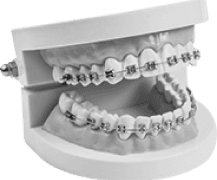MakeO blog
Good oral hygiene will maintain the health of your teeth and gums while ensuring your smile remains bright and your breath smells fresh. In order to maintain optimal oral health, it is crucial to have basic knowledge of the mouth and teeth. Understanding the basics will enable you to spot any abnormalities in time so you can treat them before the problem worsens.
In this article, let us have a look at the expert’s take on teeth anatomy for beginners.
Teeth
Teeth are hard, calcified structures that are embedded in the jaws. The white part of the teeth that you can see and use to chew your food is called the Crown of the teeth. The hidden part underneath the gums is called the Root of the teeth.
Did you know? Babies only have about 20 teeth. But by the time they develop their adult sets, they acquire 32 teeth.
There are 4 different types of teeth. Let us understand each of these types further.
1. Incisors
Incisors are the teeth in the front of the mouth. They are used in eating foods like meat that are hard to bite through.
2. Canines
These are the pointy teeth next to the incisors. They are used to tear foods like a pizza or a piece of bread.
3. Premolars
Premolars are the larger teeth behind the canines and are used to crush foods such as fruits or vegetables.
4. Morals
Molars are the largest teeth in the mouth and are used for breaking food into small pieces so they can be easily digested.
Layers of a tooth
In the understanding of basic teeth anatomy, let us learn about the 3 different layers of the teeth.
1. Enamel
The Enamel of the tooth is the strong, hard outer layer of the tooth that you can see. It protects the other layers and provides a surface for chewing. It is the hardest substance in the human body and is made up of a mineral called hydroxyapatite. The enamel protects the tooth from decay and wear.
2. Dentin
Dentin is the middle layer of the tooth that comprises dental tissues. The innermost layer -The pulp, gives the Dentin its blood supply. It is made up of a protein called collagen and a mineral called hydroxyapatite. The dentin is softer than the enamel, but it is still very strong. The dentin provides strength and support to the tooth.
3. Pulp
This is the innermost layer of the tooth that comprises blood vessels and soft tissues with nerve endings. The pulp provides nutrients to the tooth and helps to protect it from infection.
Each layer of the tooth is equally important. If your tooth starts to decay and the erosion spreads until the innermost layer, your tooth will most likely die.
Other significant parts of the mouth
1. Gums
The gums are the soft tissues that surround the teeth and attach them to the jawbone. They are made up of connective tissue, blood vessels, and nerves. The gums are important for keeping the teeth in place and for protecting the jawbone and roots of the teeth. They are called “Gingivae” in medical terms. Gums are generally pinkish in colour but will show signs of discolouration or bleeding if they are not their healthiest.
2. Tongue
The tongue is a muscular organ that contains all of the taste buds. The tongue is the reason we can taste food. It also helps in swallowing and speaking. The tongue is made up of muscle tissue and is covered with a mucous membrane. The tongue also contains papillae, which are small bumps that help to grip food and to move it around in the mouth.
3. Uvula
The uvula is a small, fleshy piece of tissue that hangs down from the soft palate at the back of the throat. The purpose of the uvula is not yet known but some scientists share that it plays a role in producing saliva and pushing the food down the throat.
How do you practise good oral care?
In addition to brushing and flossing our teeth daily, here are a few expert-validated tips that you can follow to maintain optimal oral health.
- Avoid sugary foods and drinks. Sugar feeds the bacteria in your mouth, which can lead to plaque buildup and tooth decay.
- Use a tongue scraper. A tongue scraper can help to remove bacteria and food particles from your tongue, which can improve your breath and overall oral health.
- Use mouthwash. Using mouthwash will kill the bacteria in the mouth and give your fresher breath. However, it's important to use mouthwash in addition to brushing and flossing, not as a replacement.
- Drink plenty of water. Water helps to wash away food particles and bacteria from your teeth.
- Quit smoking. Smoking damages your teeth and gums and increases your risk of developing gum disease and even oral cancer.
- Get enough sleep. Your body produces more stress hormone, cortisol when you are sleep deprived. This hormone can weaken your teeth.
- Manage stress. Stress can weaken your immune system, making you more susceptible to dental problems.
Conclusion
The teeth and mouth are complex and fascinating parts of the body. They play an important role in our ability to eat, speak, and smile. By understanding the anatomy of the teeth and mouth, we can care for them better and keep them healthy for a lifetime.
If you wish to upgrade your good oral hygiene routine, you can try out the futuristic tools from makeO toothsi. We have everything you need from an innovative electric toothbrush to a smart water flosser that will take your oral care routine to the next level.
FAQS
Which teeth are the most important teeth in the mouth?
The Molars are the most important teeth in the mouth that play a vital role in eating food.
Are any bones connected to the teeth?
The upper jawbone (maxilla) and the lower jawbone (mandible) are connected to the teeth.
What type of teeth is the strongest?
Molars are the strongest type of teeth.
What type of teeth is the weakest?
The teeth in the back of the mouth are the most vulnerable to cavities and decay. These can include wisdom teeth.
Do teeth have nerve endings?
Yes, the innermost layer of the teeth called Pulp contains a bundle of nerves and blood vessels.
related categories
Related articles

Types of Braces: Removable vs Fixed Braces, Which is Right For You?

This Diwali, Smile Bright With makeO Teeth Whitening Kit

Dr. Pravin Shetty: Pioneer in Lingual Orthodontics & Innovative Smile Solutions
How do I Know I’m the Right Candidate for makeO toothsi Teeth Aligners?

